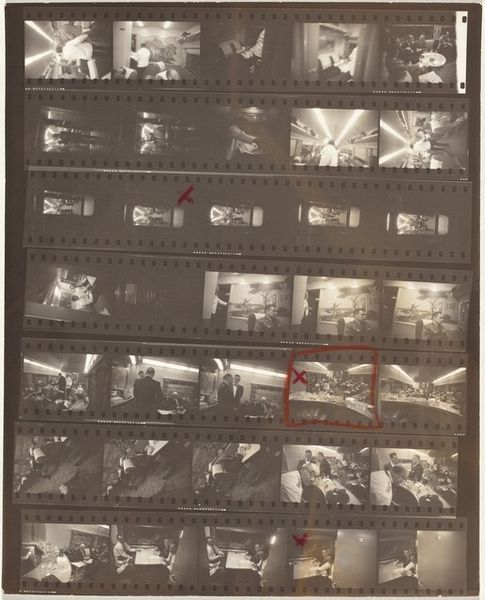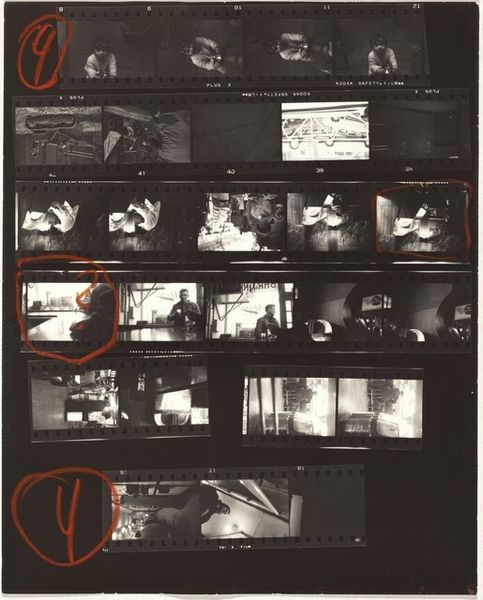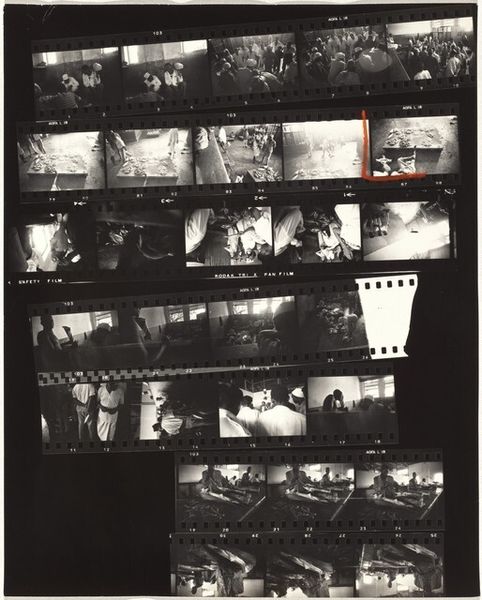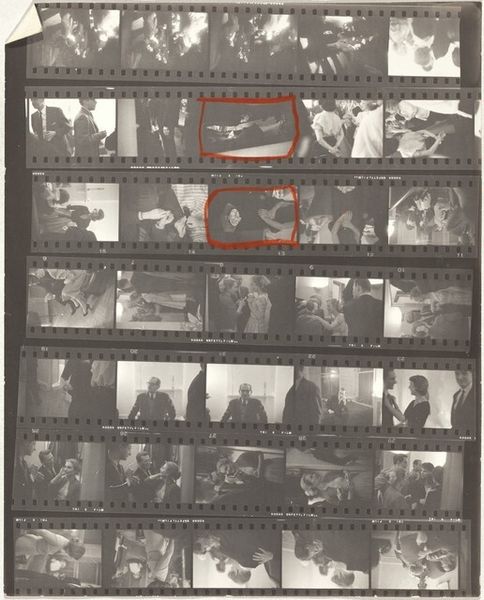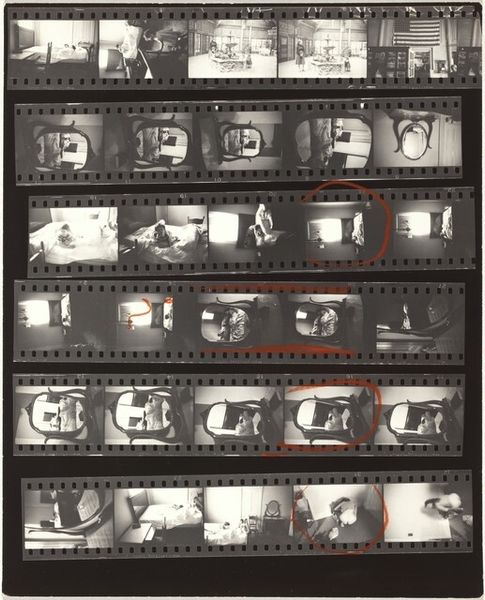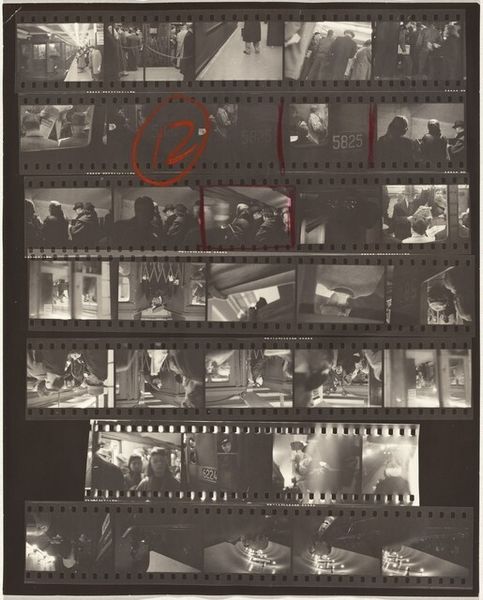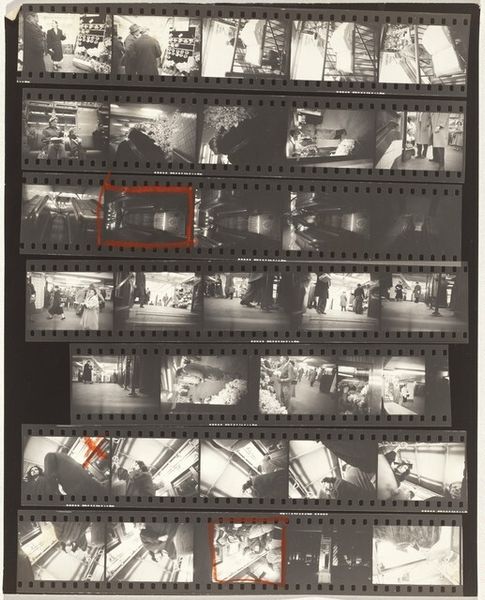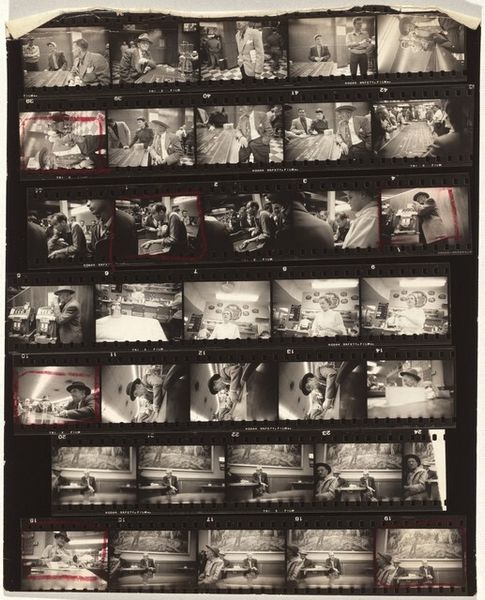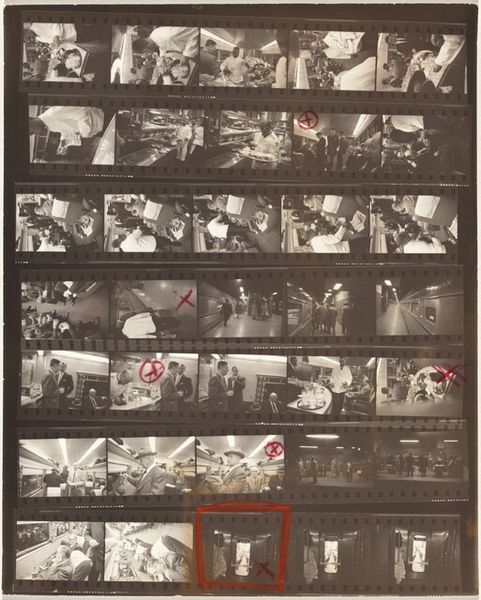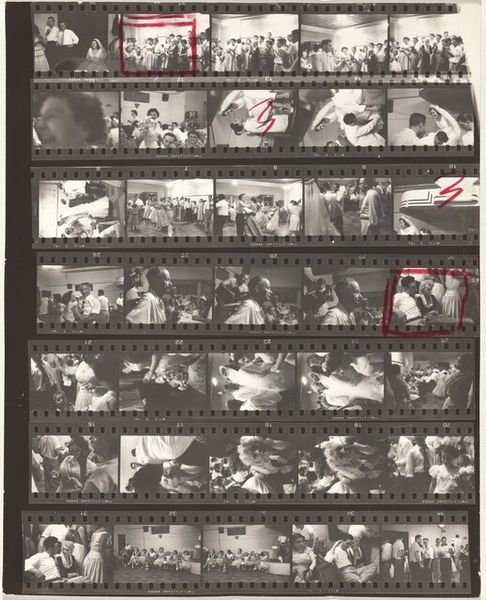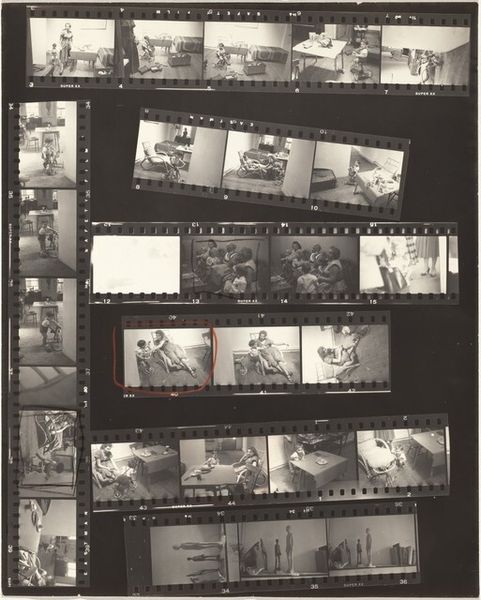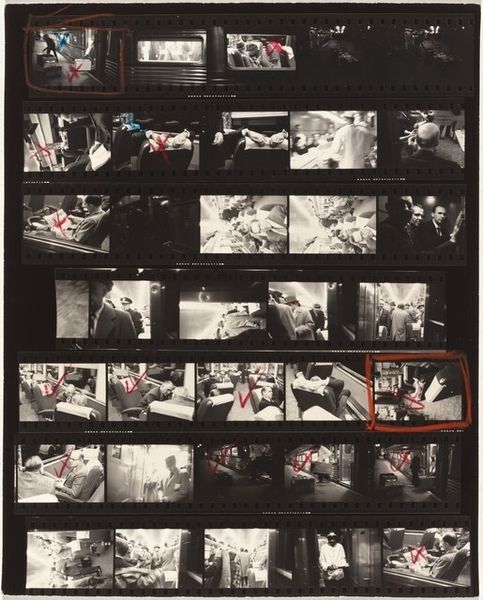
print, photography, gelatin-silver-print
#
portrait
#
film photography
# print
#
street-photography
#
photography
#
gelatin-silver-print
#
film
#
modernism
Dimensions: overall: 20.4 x 25.3 cm (8 1/16 x 9 15/16 in.)
Copyright: National Gallery of Art: CC0 1.0
Curator: Here we see Robert Frank's "Andrea as infant no number," taken in 1954. What's your immediate sense of this work, considering Frank's oeuvre? Editor: The sprockets lining the multiple images immediately evoke a raw, documentary feel, something very characteristic of Frank's street photography. The small infant looks vulnerable within all that infrastructure. Curator: Indeed. It’s a gelatin silver print presenting an intimate collection of moments. What I find particularly striking is the contact sheet format. It's less a polished final image, and more an insight into Frank's creative and technical processes. We have multiple images in one print; Frank's own visual choices laid bare before us. Look at the editing marks. He chose one frame and even wrote 'X' across some other images to be excluded. The other discarded images have just as much detail and interest, it is fascinating. Editor: Absolutely. That 'X' is heavy with decision. Think about the post-war climate: the anxiety, the emerging youth culture—how do you think this piece speaks to those anxieties through its form? Curator: Well, Frank's focus was not typically on idyllic domesticity, so the theme of innocence and vulnerability combined with the selection process makes a strong impression. The editing of images also evokes a feeling of fragmentation, a theme we can see echoed in many modernist styles and that seems to fit very well here, showing a baby, yet through this film exposure, he is also including the concept of fleeting moments and ephemeral memories, and therefore life itself. Editor: True. The seeming chaos of the sheet versus the fragile, individual child represents the push and pull of individual experience within the flow of history. Robert Frank really exposes the way photographic practices participated in cultural meaning-making in post-war America. The unedited edges remind me how institutions like MoMA grappled with elevating this type of street photography into a fine art context, given how raw the imagery felt to many contemporary audiences. Curator: Frank's focus wasn't just on documentation, but on imbuing images with subjective emotion and a commentary on the human condition. We are really lucky to look at this piece today and see all these ideas merged so seamlessly. Editor: Indeed. A very honest and visually insightful moment of both photography and self-awareness.
Comments
No comments
Be the first to comment and join the conversation on the ultimate creative platform.
